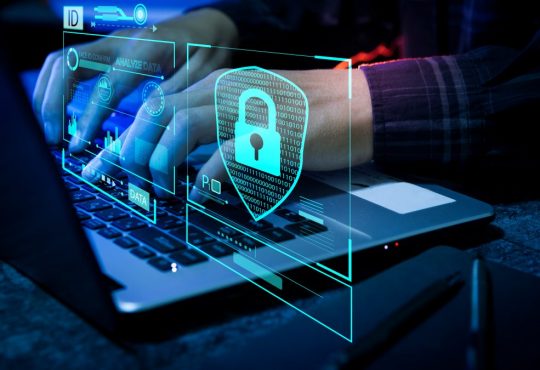
By Dr. Vikas Khare
The cyber security of information systems has emerged as a pressing concern, requiring the dedicated attention of researchers, academicians, and organizations to ensure confidentiality. Cybersecurity is the combination of ‘cyber’ and ‘security’, where the word cyber emphasized the culture of computers, information security, and augmented reality and virtual reality. Now it is necessary to protect our computers, laptops, mobile devices, and other electronic gadgets from malicious attacks. In the era of digitalization, the common terminology is used as ‘cyber civilization’ and cyber civilization is maintaining the confidentiality, integrity, and reliability of the computer resources. In the era of digitization, cybersecurity stands as a vital concern for individuals, corporations, and governments alike.
According to the report titled ‘India Cybersecurity Domestic Report 2023, cyber security spending will reach $188.3 billion in 2023 and surpass $260 billion globally by 2026. In the recent scenario, cyber security is classified into three categories cyber-crime, cyber-attack, and cyberterrorism. In a global landscape where more than 61% of industry and social interactions take place online, it is imperative to uphold rigorous security standards to enable smooth, effective, and secure engagements. Key considerations in ensuring these high-security standards encompass data protection, privacy concerns, reliability, availability, and cybersecurity. Consequently, cybersecurity has emerged as the primary mechanism for thwarting cybercrime and cyber-attacks, ensuring the safety of interactions within industries and social spheres.
In the recent scenario, there are several applications of cyber-security such as in the field of smart grid, smart city, smart eHealth systems, and data security. As per the World Economic Forum, over 10 million archives of various types, encompassing social security numbers, patient medical records, test results of different diseases, and different information about healthcare providers, were pilfered. Incidents in this sector have resulted in the compromise of an average of 160,000 records, and this figure may be higher, given instances where more than 3.1 million medical records across 30 countries were breached. The imperative for cybersecurity is evident in protecting sensitive patient information, thwarting cyber threats that pose risks to individuals and healthcare services, and ensuring secure communication between healthcare providers and patients.
College students frequently use a variety of internet platforms for social networking, communication, and academic study. Their financial information, social security numbers, and private academic records may be compromised by cybersecurity lapses, which could result in identity theft, financial loss, or reputational harm. As online learning environments and distant tests become more common, maintaining academic integrity becomes essential. Cybersecurity measures are required to stop cheating, which includes things like plagiarism that is made possible by hacking into academic databases or unauthorised access to exam materials. Employers are beginning to give preference to applicants with excellent cybersecurity abilities as more students enter the workforce. In addition to assisting students in staying safe online, knowing the foundations of cybersecurity improves their employability and employment opportunities in an increasingly digital environment.
Yet, prospective avenues in cybersecurity, including quantum computing for secure encryption of different data sets, biometric verification, strong & and weak artificial intelligence (AI), and deep learning (ML), have the potential to tackle these challenges. To guarantee the security of our digital gadgets, circuits, and data against cyber-attacks, ongoing investments in cybersecurity remain imperative for individuals, businesses, and governments.

(The author is Dr. Vikas Khare, Associate Dean and Associate Professor, STME, NMIMS Indore,Certified Data Analyst (IIT Madras), Certified Energy Manager, Bureau of Energy Efficiency, India, and the views expressed in this article are his own)






